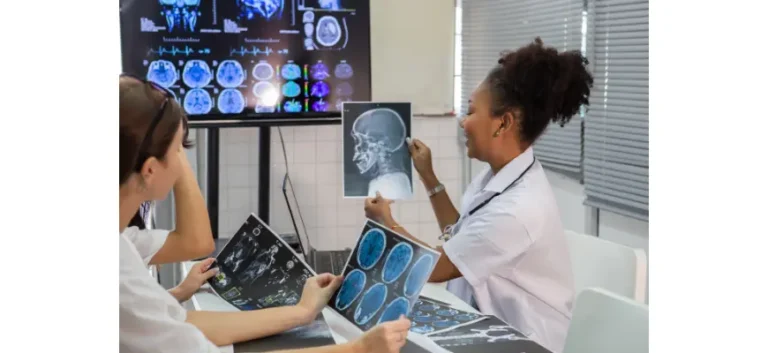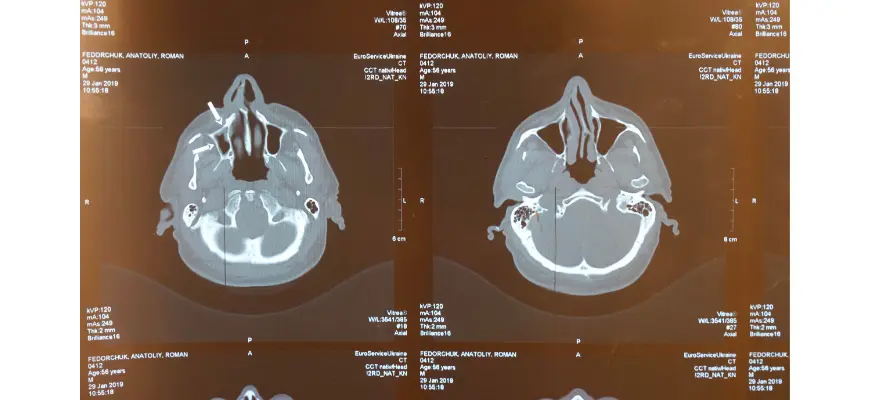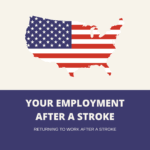Overcoming Challenges in Left-Side Stroke Recovery

A serious medical event of this kind can shake up life entirely, affecting not only one person but also those around them. When damage reaches regions tied to speech, reasoning, or movement, changes often stand out sharply. Returning to everyday habits and restoring confidence demands patience, determination, and a well-planned recovery path. This piece walks through key points—from recognizing aftereffects to exploring treatment choices and adapting daily habits. Whether facing this challenge firsthand, assisting someone dear, or simply aiming to learn more, this overview offers clarity and direction.
Understanding Left-Side Strokes
When circulation suddenly gets interrupted—either by a blockage or a ruptured vessel—serious medical effects can follow. If this disruption reaches a left brain hemisphere, movement and coordination on a right side often become impaired. That region also manages speech, language, and reasoning, so damage there may lead to trouble expressing ideas, forming words, or processing information clearly. Over time, they may notice everyday thinking and communication require more effort and focus than before.
Common Effects:
Difficulty Using the Right Arm and Leg:
A major change often follows this kind of medical event, shown by reduced control or complete loss of movement on a right side. Strength in an arm or leg may weaken significantly, or motion may stop altogether. Everyday actions once done automatically—getting dressed, crossing a room, or completing simple movements—can suddenly become difficult without another person’s assistance. Coordinating each action grows more challenging, making it harder to grasp objects, use utensils, or remain steady while standing. This shift reshapes independence, calling for new approaches and adaptive techniques to manage daily routines that once required little thought or effort.
Aphasia appears when damage reaches brain regions tied to language and expression of thought. This condition can create difficulty recalling words, keeping up during conversations, or understanding spoken or written material. At moments, words seem close yet remain just out of reach, which often leads to frustration. Reading and writing skills may change or feel inconsistent from day to day. Experiences vary widely from person to person, yet clear communication and understanding during everyday interactions often become disrupted.
Cognitive Shifts: After a major medical incident, thinking and processing can undergo substantial changes. Tasks that were previously straightforward—like remembering appointments, solving everyday problems, or following multi-step procedures—may now seem complex or take considerably longer to accomplish. Organizing information, evaluating choices, or reaching decisions can become mentally taxing, creating added strain in everyday life and introducing friction to activities that once flowed naturally.
Psychological Adjustments: Life after a significant incident can lead to unexpected shifts in daily experience. It’s common to experience episodes of sadness, irritability, or anxiety, particularly when adapting to new challenges and altered daily patterns. Managing unfamiliar activities, along with increased dependence on outside assistance, can create a sense of being overwhelmed or unsettled. These internal struggles are a natural response to major changes and require understanding, patience, and thoughtful attention from those nearby as well as from oneself.
Trouble Swallowing (Dysphagia):
After a serious neurological event affecting certain muscles and nerves, swallowing often becomes difficult. Drinks or meals may move unevenly, sometimes leading to coughing, choking, or a stuck feeling. This situation makes keeping up with fluids and daily nourishment more complicated. Adjusting textures, altering how drinks get taken, or applying personalized methods can lower complications and make eating easier to manage. Speaking with a trained specialist who focuses on swallowing challenges allows individuals to learn safer, more effective ways to eat and drink with confidence.
Understanding how these effects unfold becomes an important turning point. While what lies ahead may feel overwhelming or uncertain, forward movement remains possible through consistent effort, thoughtful planning, and dependable guidance from people and resources you trust. With time and persistence, direction grows clearer and progress begins to take shape.
Recovery Process: What to Expect Along the Way
Recovering from a stroke that impacts one side involves a unique and challenging journey. Improvements can appear rapidly for some, while for others, noticeable changes may unfold over months or even years. Recovery typically unfolds through several phases, each with its own set of milestones and adjustments.
Initial Response Phase: This stage marks an urgent period right after a left-side stroke, usually managed in a hospital or intensive recovery setting. During this window, medical teams focus on keeping vital functions steady, avoiding further complications, and dealing with immediate concerns like vessel blockage or internal bleeding. Quick action plays a major role in minimizing long-term damage. Once stability returns, therapists often begin light movements or guided routines designed to awaken motor control and awareness of surroundings. Simple steps, such as sitting upright, responding to voices, or following visual cues, start rebuilding movement patterns, posture, and interaction with nearby space. These first efforts form a sturdy base for ongoing recovery, preparing a person to regain strength, coordination, and mental adaptability over time.
Subacute Phase: What Takes Place During the Following Weeks and Months After an Event
Once urgent moments pass, following weeks often mark a vital window for visible recovery. During that time, maintaining steady involvement in well-organized routines becomes key. Neural connections keep adjusting, showing an impressive ability to form fresh links and reinforce old ones. With regular practice and encouragement from close ones or trained experts, actions that once felt nearly impossible—like moving with balance, dressing without aid, or communicating smoothly—start becoming achievable. Persistent repetition combined with a careful, gradual method throughout this period often brings meaningful gains in abilities that once appeared far out of reach.
Ongoing Phase: Progress can continue gradually, sometimes extending over several years. Even if advancements occur at a slower rate, persistent effort and steady practice can result in visible gains in completing everyday activities, enhancing self-reliance, and navigating daily living with greater ease and assurance.
Key Steps to Regain Your Strength and Independence
Bouncing back from this kind of event calls for a well-rounded approach. Below are core elements that shape an effective plan and encourage steady progress over time:
Physical Therapy
Regaining physical abilities after a major life-changing event takes dedication and consistent, focused effort. With guidance from an experienced specialist, you’ll follow a tailored activity plan designed to:
Strengthen overall steadiness and refine walking coordination to reduce chances of tripping, wobbling, or pausing while in motion.
Activate muscle groups that may have become less responsive, allowing for greater power and control in those areas.
Prevent complications such as stiffness, spasms, or joint immobility by maintaining flexibility in muscles and tendons through gentle, precise exercises.
Following these steps can rebuild confidence and strengthen your connection with your body, making daily tasks feel easier and more natural to handle.
Speech Therapy
When sharing thoughts feels difficult, conversations seem confusing, or understanding what others mean becomes a struggle—whether due to changes in brain function or limits in movement—working with a communication specialist can bring meaningful improvement. These professionals create focused exercises and guided activities that rebuild clarity step by step. With practice, confidence grows in forming sentences, expressing ideas, and understanding spoken or written messages. Over time, interactions with friends, family, and coworkers often feel smoother and more natural.
These experts, commonly called speech-language pathologists, develop personalized programs aimed at strengthening communication abilities. Sessions usually begin with a detailed evaluation to understand current strengths and areas needing improvement. Using that insight, they design customized techniques that target specific challenges, allowing steady progress in clear expression and accurate understanding of others.
Some core techniques they use include:
Speech-building practices: Tasks can include repeating simple sounds, forming complete words, or arranging full statements. Focus stays on steady progress toward clearer verbal expression so communication feels natural and easy to grasp. Based on how much difficulty exists, sessions may target pronunciation accuracy, pacing and rhythm while speaking, or refining smoothness and clarity throughout conversation.
Alternative Communication Methods: Spoken language may not return right away—or at all—after a left-side neurological event, so specialists often introduce other ways to interact. This can involve using hand signals, visual boards, or tablet apps that allow someone to choose words, symbols, or images to share ideas. These approaches strengthen connection with others, making conversations feel more natural, clear, and comfortable despite challenges with verbal expression.
ChatGPT said:
Safe food and drink routines: When swallowing muscles fail to work properly, each bite or sip can turn risky. A specialist carefully checks how meals and beverages move through mouth and throat, then recommends safer choices such as thicker liquids or altered food consistencies. In advanced situations, that professional trains individuals in targeted swallowing strategies designed to shield airway and cut down chances of choking.
Each session is designed to build self-assurance and strengthen social engagement. Small achievements—like remembering a friend’s name or completing a simple errand alone—can be deeply rewarding. Working with a trained specialist opens opportunities to interact more naturally with others, navigate daily interactions more smoothly, and become more at ease within familiar surroundings, all while reducing moments of frustration or overwhelm.
Occupational Therapy
Support in handling daily routines focuses on guiding you toward regaining control over tasks that are key to your personal independence. An experienced specialist can work side-by-side with you to:
Rediscover how to perform activities such as putting on clothes, preparing meals, and personal grooming.
Modify your living space to better suit your current needs, making it safer and easier to navigate.
Introduce and demonstrate practical tools and devices designed to make everyday tasks easier to manage. Show how each item fits into daily routines, explain simple ways to use them, and allow time for hands-on practice. With guidance and repetition, these tools can boost confidence, reduce frustration, and make routine activities feel more manageable and efficient.
Cognitive Rehabilitation
Experiencing difficulty with thinking clearly, remembering details, or managing complex instructions is a common challenge after a neurological incident, but several structured strategies can enhance cognitive performance. Specialized programs focused on mental development often include a variety of carefully designed exercises and progressive techniques that encourage sharper reasoning, improved memory retention, and more efficient problem-solving skills. These approaches break complex processes into manageable steps, allowing for gradual improvement in processing information and navigating daily challenges.
Memory-Enhancing Exercises: Activities might involve rehearsing names, dates, or sequences, engaging in puzzles or games that challenge retention of details, or applying imaginative strategies to make remembering information simpler. Regularly participating in these exercises can gradually make recollection smoother and more instinctive, allowing information to come to mind with greater ease.
Problem-solving drills center on breaking complex challenges into smaller, achievable steps. Activities may involve puzzles, logic-based games, or realistic scenario simulations that mirror everyday situations. Each exercise aims to strengthen analytical thinking, improve reasoning ability, and encourage development of practical strategies for handling challenges efficiently. With repeated practice, these drills can sharpen decision-making, boost mental clarity, and build confidence when approaching new or unfamiliar situations.
Techniques to Boost Focus
Sustaining attention over extended periods can be challenging, especially when thoughts scatter or become overwhelming. Several approaches can strengthen mental engagement, such as practicing mindfulness exercises, dividing large assignments into smaller, more manageable portions, or setting timers to define dedicated concentration intervals. Consistently applying these strategies can enhance clarity of thought, maintain steady focus for longer stretches, and minimize interruptions that slow down overall performance.
By regularly practicing these tailored approaches, individuals often notice improvements in how well they can think clearly, organize their thoughts, and complete tasks that previously felt confusing or overwhelming.
Emotional Support
Major shifts often appear following a serious neurological event, touching emotions and daily routines in unexpected ways. Guidance from trained counselors, involvement in neighborhood programs, and specific treatments suggested by medical professionals can make moments of sorrow, tension, or frustration easier to manage. They may feel overwhelmed at first, yet progress grows with steady effort. Reaching out during such times shows strength and determination to move forward.
Lifestyle Changes to Bring Back Your Sense of Self Again
Outside formal teaching or organized courses, developing consistent practices within one’s own space can bring visible progress in confidence and steady advancement. Simple, intentional adjustments—such as reshaping daily routines, adding nutritious choices, and participating in activities that bring joy—can nurture a stronger sense of steadiness and harmony through each day. Such mindful efforts often create lasting groundwork for ongoing progress, giving a reliable base from which growth can naturally expand over time.
Adopt a Brain-Healthy Diet
Daily eating habits strongly influence how mind and nerve pathways adjust and rebuild after a serious medical event. Certain nutrients act like protectors for delicate nerve fibers, lowering chances of added harm while encouraging formation of fresh connections among nerve cells. These new links improve focus, refine movement control, and elevate overall nerve system performance as progress continues.
Start by adding a broad mix of antioxidant-rich choices to meals. These natural compounds work against damaging particles that interfere with mental and nerve function. Bright fruits such as blueberries, strawberries, and raspberries offer excellent options, along with deep green vegetables like spinach, kale, and Swiss chard. Alongside antioxidant strength, these foods deliver vitamins and minerals that nourish sensitive tissues and boost overall vitality.
Omega-3 fatty acids play a major role in maintaining flexibility and structure within brain cell membranes. Rich sources include salmon, mackerel, and sardines. For those preferring plant-based options, flaxseeds, chia seeds, and walnuts provide valuable amounts. Regular intake often connects with sharper thinking and calmer inflammatory activity within nerve networks.
Whole grains filled with nutrients assist in keeping glucose levels even, offering steady fuel for brain activity. Choices such as quinoa, brown rice, and oats supply fiber, B vitamins, and essential minerals that encourage quicker reasoning, clearer focus, and smoother mental flow through busy days.
Lean selections like poultry, beans, tofu, and low-fat dairy deliver amino acids needed for building neurotransmitters—tiny messengers that carry signals between nerve cells. Including these protein-rich options daily supplies materials required for reliable nerve communication and consistent mental performance.
Finish by including nourishing fats from avocados, olive oil, and assorted nuts. These sources provide compounds that aid restoration of delicate nerve pathways while guarding against oxidative damage. With steady inclusion over time, overall function strengthens, balance improves, and confidence grows during everyday activities.
By thoughtfully selecting and adding these nutrient-dense options, they build a strong foundation that encourages whole-system recovery, mental sharpness, and smoother movement. These choices work together to reinforce vital functions, clarify thinking, and improve natural flow during activity. With steady use over time, overall capacity grows, balance becomes easier to maintain, and confidence increases when handling everyday tasks with greater ease and control.
Stay Active
Maintaining consistent movement throughout each day can dramatically improve overall wellness. Even when certain muscles or joints have reduced responsiveness, there are plenty of ways to remain physically engaged. Gentle activities—such as light stretching, chair-based yoga, or slow range-of-motion exercises—can enhance circulation, loosen tight muscles, and increase overall energy levels. Incorporating these movements regularly may also improve posture, coordination, and stamina, making daily life smoother and more manageable. Before beginning any new program, consulting a qualified healthcare professional is recommended to ensure exercises are safe and appropriate for current capabilities.

Prioritize Sleep
Adequate nightly rest holds immense value after a severe left-side neurological event. During quiet hours, brain along with its intricate network of nerves begins vital restoration, rebuilding connections and renewing injured areas—much like unseen workers repairing and fine-tuning a complex system. Getting seven to nine hours of calm, uninterrupted sleep often improves alertness, sharpens memory, and encourages steady progress over time.
When drifting off or staying asleep feels difficult, they may benefit from guidance shared by experienced professionals who offer practical approaches. This can include arranging a sleep space for deeper relaxation, adding calming bedtime routines, or adopting proven habits that invite deep, refreshing rest.
Manage Stress
Ongoing tension often makes progress feel heavier and regular tasks seem harder to manage. Adding soothing routines into daily moments can lighten that pressure. Gentle actions such as steady, mindful breathing encourage inner balance, while meditation—guided or quiet—creates room for clear thinking to rise. Mindfulness strengthens awareness, keeping attention grounded in current moments instead of letting worry or irritation take control. Practiced regularly, these methods nurture calmness that lasts, sharpen concentration, and make everyday living flow with greater ease and steadiness.
Stay Socially Connected
Feeling cut off from others can weigh heavily on mood and mindset. Staying connected with close friends, family, or nearby groups can lift spirits and remind you that no one faces challenges alone. Whether it’s a brief phone call, a friendly visit, or joining a neighborhood get-together, moments of connection make a meaningful difference. These shared interactions strengthen belonging, reinforce community ties, and bring comfort during everyday moments.
Innovative Treatments and Technologies
Cognitive Difficulties: Following a major left-side neurological event, noticeable shifts in thinking and reasoning often appear. Tasks once handled with ease—like remembering schedules, managing everyday matters, or following multi-step directions—now demand extra focus and persistence. Sorting details, weighing options, or choosing between alternatives may feel draining, adding tension to ordinary moments and stretching time spent on each activity. Mental effort increases significantly, so they often need steady patience, self-awareness, and mindful involvement with every step taken.
Constraint-Induced Movement Therapy (CIMT)
Constraint-Induced Movement Training, often called CIMT, centers on increasing use of a weaker limb by gently limiting movement on a stronger side. With consistent practice, this focused approach pushes greater involvement from underused muscles. Over time, coordination improves and more natural movement patterns begin to return, replacing habits that faded during long periods of inactivity.
Electrical Stimulation
Functional electrical stimulation, known as FES, applies gentle electrical pulses to specific muscle groups that have lost strength or proper response. These pulses imitate natural signals usually transmitted through nerve pathways, causing muscles to contract and perform movement. Regular sessions can build strength, improve coordination, and restore lost motion in targeted areas. This technique is carried out by qualified practitioners and often forms part of broader mobility-focused routines, promoting better balance, improved reach, and steadier walking ability.
Virtual Reality (VR) Therapy
Immersive digital environments, such as those provided by virtual reality, create an entirely new approach to physical and cognitive training. Instead of performing repetitive movements in a conventional setting, participants enter lifelike simulations—strolling through a park, grabbing objects from shelves, or engaging in interactive challenges. These experiences make practice more engaging while activating multiple senses simultaneously, which can enhance concentration and persistence. By turning exercises into a gamified adventure, motivation rises, engagement strengthens, and measurable progress becomes more achievable.
Stem Cell Therapy
Still under active investigation, stem cell therapy shows notable promise for restoring injured tissue within affected areas and enhancing overall function. Specialists suggest these unique cells may renew regions harmed during a neurological incident, potentially improving coordination, strength, and daily performance. While this approach has not yet reached widespread use, ongoing research points toward a future where it could emerge as an advanced option for individuals seeking greater independence and renewed ability through modern medical innovation.
Brain-Computer Interfaces (BCIs)
Brain-Computer Interfaces, often called BCIs, stand as groundbreaking innovations that create a direct bridge between human thought and external machines. Through mental activity alone, users can interact with technology without relying on physical movement. These systems read and decode electrical impulses produced within neural pathways, translating those signals into digital commands that operate computers, robotic limbs, or mobility equipment. Such advancement opens new doors for individuals facing challenges with motor control or coordination, granting a renewed sense of independence and interaction with daily surroundings. This emerging field continues to expand possibilities, reshaping how thought connects to action in extraordinary ways.
The Role of Caregivers in Stroke Recovery
Individuals offering guidance to someone facing consequences from a severe brain injury hold a vital place in that person’s path toward recovery and renewal. For anyone stepping into this role, several thoughtful approaches can create real impact and foster progress:
Put effort into understanding that condition along with its impact on different skills and abilities. Gaining awareness of those changes allows for more mindful and attentive guidance, responding suitably to each challenge as it comes.
Exercise patience and provide motivation as someone works through rehabilitation exercises and activities. Improvements might develop gradually and demand ongoing dedication, so maintaining a positive outlook can serve as a strong driving force toward continued advancement.
Offer aid with routine tasks like getting dressed, moving around rooms, or shifting from one place to another, while still encouraging personal effort and choice. Keeping a steady balance between lending a hand and allowing space for self-action builds confidence, sharpens abilities, and strengthens a sense of independence.
Pay attention to your own wellness—both physical and mental. Assisting someone recovering from a serious incident can be exhausting and draining, so it’s crucial to set aside moments for rest, leisure, and connection with friends, family, or community networks that recharge energy and provide encouragement.
Providing ongoing assistance after a major incident often calls for deep commitment and steady energy. Over time, this role can feel draining, especially while balancing other responsibilities or adapting to unfamiliar routines. Reaching out to community groups, peer networks, or trained professionals who focus on caregiving is a practical and positive step. These connections create space to share experiences, exchange useful strategies, and learn from others who truly understand similar challenges. Feeling understood and supported can ease the load, restore motivation, and make daily responsibilities feel more manageable through shared encouragement and collective strength.
Staying Motivated: Power of Mindset
Facing this kind of challenge calls for patience, resilience, and steady effort. Recovery unfolds slowly, more like following a winding path filled with unexpected turns and gradual climbs. Some days bring clear progress, while others test inner resolve more than expected. What matters most is holding a positive, forward-looking mindset. Celebrate every small win, even when it feels minor. Break larger goals into manageable steps to avoid feeling overwhelmed. Surround yourself with people who truly recognize progress and offer encouragement—family, close friends, or others who have walked similar paths. Their presence and motivation can spark perseverance when direction feels uncertain.
Can a Stroke Cause Vision Problems?
Yes, when this kind of medical event affects areas linked to sight, such as occipital region or pathways responsible for visual processing, eyesight disturbances can arise. A frequent condition in such cases is homonymous hemianopia, which causes loss of vision on right side of both eyes. This pattern appears since damaged region usually handles image interpretation from opposing side of a person’s visual field.
What Can Be Done?
Sight Adjustment Guidance:
A specialist experienced in visual impairment training can teach ways to move safely through spaces where sight feels limited. Methods may include structured scanning exercises that train eyes to notice and process details coming from weaker areas within a visual field. With regular practice, spatial awareness grows stronger, allowing smoother and safer movement around home or workplace settings. Over time, confidence rises during daily movement as navigation becomes more controlled and predictable.
Prism glasses work as specialized vision tools that adjust how surroundings appear by bending light away from weaker sight zones toward stronger visual areas. Through this shift, they gain better awareness of nearby space, which allows smoother, safer movement. A wider viewing range fills in missing visual sections, reduces bumps into objects, and builds confidence during everyday activities like walking, driving, or reading signs.
Environmental Adjustments: Thoughtful changes within living or work spaces—such as positioning frequently used items closer to a side with stronger movement—can greatly simplify daily routines. Small layout shifts allow tasks to feel smoother, reduce strain, and promote independence. When surroundings get organized around personal needs, challenging moments often turn into manageable ones, letting activities move along with greater comfort, confidence, and consistency.
Vision difficulties often bring a sense of frustration, yet with proper guidance and well-planned strategies, many individuals adjust successfully and continue living independently with confidence.
How Does This Condition Impact Emotional Regulation?
When this type of neurological disruption reaches areas linked with response control and personal expression—such as frontal lobe regions—it can interfere with how someone processes and shows reactions. One example involves a condition called pseudobulbar affect (PBA), where someone may suddenly laugh or cry without warning, even when those reactions do not match what they actually feel inside. It also remains common for individuals to deal with ongoing nervousness or low mood while adjusting to major life changes after such a serious event.
What Can Be Done?
Medications like antidepressants or those designed to treat pseudobulbar affect (PBA), including Nuedexta, may assist in controlling mood-related difficulties and unexpected changes in mood expression.
Cognitive-behavioral methods such as CBT or counseling provide techniques to handle shifts in mood and assist in processing feelings of sorrow or irritation.
Practices designed to increase mindfulness and tranquility—like meditation, intentional breathing exercises, or slow, gentle yoga—can reduce stress and cultivate inner calm. These methods enhance mental sharpness, improve concentration, and make it easier to navigate moments of overload, fostering a deeper sense of serenity and overall harmony.
Joining peer-led meetups or discussion groups with others who have experienced similar life-altering experiences can foster a deep sense of belonging and mutual understanding. These gatherings provide opportunities to exchange experiences, share strategies, and learn from one another’s journeys. Participants often come away with a renewed sense of inclusion, insight, and reassurance while navigating significant adjustments in daily living.
Final Thoughts
Facing life after a major neurological event brings many hurdles yet also opens space for growth and renewed strength. With focused rehab plans, smart lifestyle adjustments, and steady drive, progress in movement, speech, and independence can reach impressive levels. Community initiatives, programs, and organizations offer ways to stay connected and find useful resources along this journey. For those moving through recovery or standing beside someone else, each phase calls for patience, persistence, and trust in personal resilience that fuels ongoing advancement.
When someone or someone close faces life after a major medical event, progress can still be achieved. Through steady effort, motivation, and a well-guided plan, strength can return, and a vibrant, purposeful way of living can take shape once again.



